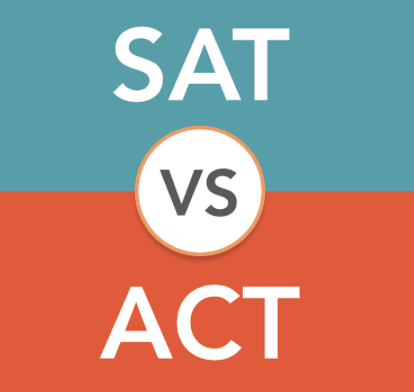
SAT Reading Tips
Many students are daunted by the long passages and tricky questions on the reading section of the SAT, and we totally get it! The reading comprehension is meant to be challenging, but it’s actually quite straightforward once you understand how it’s designed and what strategies you need to approach it. To help you out, we’ve compiled a list of 5 essential things everyone should know about the SAT reading section. If you follow these tips, you’ll be sure to put your best foot forward on test day!

Many students are daunted by the long passages and tricky questions on the reading section of the SAT, and we totally get it! The reading comprehension is meant to be challenging, but it’s actually quite straightforward once you understand how it’s designed and what strategies you need to approach it. To help you out, we’ve compiled a list of 5 essential things everyone should know about the SAT reading section. If you follow these tips, you’ll be sure to put your best foot forward on test day!

What Does the SAT Reading Section Require Students to Do?
For the SAT reading section, students are required to read through several passages and answer a series of questions on their contents.
How Long is the SAT Reading Section?
The SAT reading section is 65 minutes long.
How Many Questions are on the SAT Reading Section?
There are 52 multiple-choice questions on the SAT reading section.
SAT Reading Passages
The SAT reading section always contains the same 4-5 passage types:
- 1 passage from a classic or contemporary work of U.S. or world literature.
- 1 passage or a pair of passages from either a U.S. founding document (such as an essay by James Madison) or a text in the Great Global Conversation (such as a speech by Nelson Mandela).
- 1 passage on a social science topic from a field such as economics, psychology, or sociology.
- 2 science passages (or one passage and one passage pair) that examine foundational concepts or recent developments in Earth science, biology, chemistry, or physics.
Source: The Official SAT Study Guide
Why is SAT Reading so Hard?

SAT reading can be hard for several reasons:
- There is a lot of text and not a lot of time. There are 65 minutes allotted to read 4-5 passages and answer 52 questions. This in itself is difficult for many students who are not used to reading quickly or have attention deficits.
- Some of the passages can be quite difficult in terms of vocabulary and syntax. This is particularly true for the US founding document, which may have been written in the 18th or 19th century and uses very different language than what we are used to reading today. This will pose challenges to students who have no experience reading historical documents.
- The questions are tricky, and deliberately so. The SAT will always give you trap answers but may seem correct but are not in fact correct. Students must ensure that they have textual evidence for answers and are thoroughly evaluating each answer choice for the one that best fits the question.
How to Manage Time on SAT Reading?
Students should try to spend approximately 13 minutes on each passage of the reading section. We recommend students buy a non-smart watch that they can use to time themselves during practice tests. By practicing self-timing, students can make sure they are not spending overly long on any one passage, which may prevent them from finishing the section and getting as many questions right as possible.
Students can also prioritize passage and questions based on difficulty level, which we go more in depth on in the Tips section. Ultimately, taking timed full length-practice tests is the best way for students to develop an internal sense of timing and improve their speed and comprehension.
How to Study for SAT Reading?
The best way to study for the SAT reading section (and the SAT in general) is to take frequent full-length practice tests. After each test, students should go back through all the questions they answered incorrectly, understand where they went wrong and how to find the correct answer choice. For more tips for studying for the SAT reading, see the section below.
The College Board has practice tests on their website for students to download and practice. However, the best way to practice is to take these tests at a test center with a proctor to replicate the real test conditions as closely as possible. Ivy Tutors Network offers diagnostic and mock testing to all our clients, both online and in-person at our testing center. In addition to proctoring our tests come with a comprehensive score report that allow you to track progress and identify areas for further study.
5 Tips to Improve your SAT Reading Score
1. Have evidence for your answers
Unlike your high school poetry unit, the SAT reading section is not interested in your ability to infinitely expand upon the connotations of a single word. In fact, the more interpretive leaps you have to make, the less likely an answer is to be correct. The reading section of the SAT is testing you on one thing: your ability to draw conclusions from a text based on evidence.
Consequently, you should be able to point to a specific line or lines of text to support your answer choice. If you can’t find textual evidence for your answer, then it probably isn’t correct. Think of yourself as a prosecutor in a criminal trial. You need direct evidence to make a conviction. The same applies to the SAT reading section. Every right answer should be provable.
We suggest this following exercise for students who are still struggling to get a handle on the reading section:
- Go back through the reading section of your recent mock test(s) and independently review each question answered incorrectly.
- Systematically evaluate the evidence for each answer choice on a given question, referring back to the passage and re-reading the entire thing if necessary.
- Once you think you have the right answer, underline a line or lines of text that serves as evidence for your choice.
- Read back through the answer explanations or go over the questions with a tutor to see if you were able to successfully evaluate the evidence to arrive at the right answer.
At first, this may feel like an overly slow and laborious process. But after reviewing a few practice tests, it will get both faster and easier, and eventually, become second nature. Performing this exercise demonstrates that there is no need for guessing on the reading section. The answer is always there in the text, if you just know how to look for it.
2. Know the passage types
As students take more practice tests, they'll come to realize that some of the passage types are more difficult for them than others. You may realize that you always have trouble with the literature passage, while someone else may find the founding document impossible to decipher. Knowing which passages are harder and easier can provide a strategic advantage. Since the SAT is about racking up as many correct answer points as possible, students can prioritize the passages they know they'll do well on, and save the more difficult ones for the end. Alternatively, students may opt to tackle the harder passages at the beginning of the test while they are fresher and have more focus.
Pro Tip: It can be beneficial for students to practice for the SAT by reading texts in the genre of the passages they find most difficult. For instance, students could read The Federalist Papers or Thomas Paine’s Common Sense to become familiar with 19th century vocabulary and syntax, often present in the founding document. Students who struggle with the science passage could read articles in Nature Magazine etc.
3. Know the question types
Just as you can prioritize the passages based on difficulty, you can also prioritize the questions based on how easy or hard they are to answer. If timing or reading through the entire passage is an issue, it’s a good idea to start with questions that contain direct line references. These include:
Words in Context Questions, in which which you are asked to determine the meaning of words or phrases as used in particular contexts, and
Command of Evidence Questions, in which you are asked to find the best evidence in the passage for the answer to another question. More on these in the next section…
Detail Questions do not have line references, but are among the easier question types because they simply ask about specific details and information from the text.
Main Idea Questions, in which you are asked to choose the answer that best summarizes the argument of the passage or section of the passage, are not necessarily hard, but they do require having read the entire passage to get the overall meaning.
For Rhetoric Questions, you’re asked to think about how an author’s word choice affects meaning, tone, and style, and what role the various parts of the passage play in its overall structure. These also require reading the whole passage and involve more analysis.
Finally there’s the Synthesis Questions, which do tend to be more difficult. Many of these questions appear in the science and social science passages and involve tables or graphs. You may be asked to determine what conclusion is most reasonable based on the data or integrate this information with ideas from the passage. Synthesis questions almost always appear on the paired passages, and often ask how the author of the first passage would likely respond to a claim made by the author of the second
It’s worth becoming familiar with the different question types not only from a timing perspective, but also because each of them requires a specific approach. With abundant practice, or with the help of a seasoned tutor, students can learn the right strategy to tackle every type of question on the SAT.
4. Get "2 for 1" on the paired “Command of Evidence” questions
There are 10 “Command of Evidence” questions on the SAT reading test, generally two per passage. Because these questions come in pairs, mastering them can get you two points for the price of one -- or help you avoid losing two points by not doing them correctly!
The first question in the pair will ask you something about the passage. The second will ask, “Which choice provides the best evidence for the answer to the previous question?”, and provide you with a selection of line numbers. The good news is that the second question directs you to the lines you will need as evidence for the first. What makes these questions tricky is that you’re guaranteed to have a pair of answer choices that looks like a match, but is not actually the “best” evidence. If you make sure to ask yourself these two questions, “Is there evidence?” and “Is this the best answer choice?”, then you are much more likely to avoid the obvious traps.
Pro Tip: Students often make the mistake of answering the first question without realizing that the second question provides the requisite line references. Not only does this make answering the first question more difficult, it’s also a waste of time. Before you start, make note of the paired questions so that you can be sure to do them together and avoid this common mistake.
5. Know the strategy that works for you
There’s a lot of content floating around about how to “hack” the SAT reading section, some of it useful and some of it not. Some say you should always read the passage in its entirety, while others recommend reading the questions first and then selectively from the passage to save time. The truth is, there isn’t necessarily one strategy that works for every student. Some test takers won’t have the time to read the entire passage no matter how hard they try, while others should absolutely read through in order to avoid missing key information. We are all different. Lots of practice, including abundant mock testing, is the best way to identify the approach that is right for you. Our world-class SAT prep tutors are also experts at helping students develop the strategies they need to master the SAT reading section.




![Should You Take the SAT or ACT in 2023 [EXPERT ADVICE] Should You Take the SAT or ACT in 2023 [EXPERT ADVICE]](/_next/image?url=https%3A%2F%2Fcdn.sanity.io%2Fimages%2F7i1ps9pf%2Fproduction%2Fa489bac2b32dd5ad0d3b4c48b0dd9662705f5e7b-768x433.jpg&w=3840&q=75)